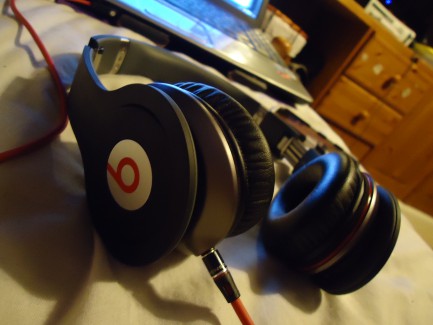Business Critical: Ice Buckets and Beats Headphones
Business Critical is our weekly collection of what’s new, exciting, and insightful for business leaders from the world of the web, marketing, social media, and more.
The Ice Bucket’s Unlikely Viral Success
If you’ve been on Facebook or Twitter at all in the past few weeks, chances are you’ve seen people dumping buckets of ice water on their head to raise money for ALS, otherwise known as Lou Gehrig’s disease. The posts climbed from obscurity to ubiquitousness in just a few weeks, spurred on by celebrities as disparate as Bill Gates, Toronto Mayor Rob Ford, actor Chris Pratt and even Iowa Governor Terry Branstad (as well as a host of people who aren’t so good at it).
So how did the phenomenon spread so quickly? MarketingLand has a great post investigating the roots of the movement, and its origins are more ordinary (and grassroots) than you might think.
The concept itself is rather unclear, and doesn’t appear to have any connection with ALS or any official ALS organization, though they have joined the movement. Former college baseball player Pete Frates and his Facebook fan page, Team FrateTrain posted the first video. After some local TV coverage, the phenomena snowballed by “calling out” others to join the movement.
Not only did they dump water on their head, but they donated — more than $31 million has been donated in August 2014. The same time period last year only yielded $1.9 million. That’s a lot of cold, hard cash going to a great cause.
Design Lessons from Beats Headphones
Design nerds were excited about this summer’s biggest mergers — Apple purchased Beats Audio, maker of the chunky, oversized and continuously popular headphones that share the same name.
“I’ve always known in my heart that Beats belonged with Apple,” said Beats co-founder Jimmy Iovine in a May 2014 news release. “The idea when we started the company was inspired by Apple’s unmatched ability to marry culture and technology.”
The third wheel of that marriage, inarguably, is design. Apple and Beats share a similar sleek, simplistic and unmistakable design that sells very well, and, in an Inc. Magazine article, author Graham Winfrey investigates the reasons behind the design’s success. He boils it down to three characteristics:
• Comfort and convenience. Beats has continuously improved their product to be more comfortable and useful for the user by adding wireless capability and a lighter structure.
• Multitasking. If your users are mostly coming from mobile, add in functionality to make your device comfortable on whatever platform it might be used on.
• Energy and Space. Don’t hog battery life and storage space if you don’t have to. Beats headphones collapse and turn off when not in use.
A Kid-Friendly Google?
In the US, Google requires users to be 13 or older to have a GMail account. That leaves millions of kids who could potentially want access to email, along with other Google products, in the dark. While Google remains tight-lipped about rumors of upcoming projects, kids under the age of 13 are likely Google’s next target market, according to articles on TheInformation.com and Entrepreneur.
With the advent of kid-friendly tech, it only makes sense that kids should legally get GMail addresses, access to YouTube and other Google projects. Google’s new foray into kid-friendly access will undoubtedly have stepped-up parental controls.



